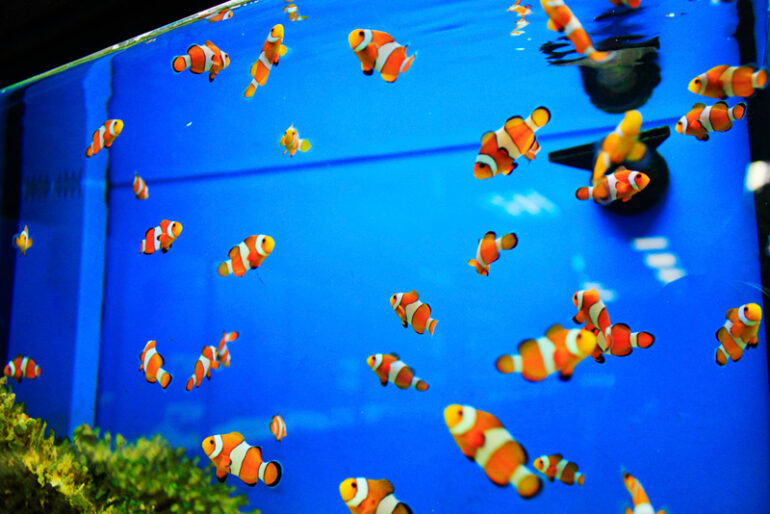A healthy, thriving community of saltwater fish begins with the judicious selection of specimens at your LFS. While not every potential health problem or disease will be evident to the naked eye, cautious appraisal of all prospective specimens for health concerns is vital and can save you a lot of headaches—not to mention dollars—down the road. Here’s what you should look for:
Physical red flags
Don’t open your wallet for a specimen exhibiting any of the following physical signs or symptoms:
- Severely damaged or missing fins (a clean slice or notch in a fin with no sign of tissue necrosis is not a “deal breaker” however)
- Clamped fins
- Bulging or cloudy eyes
- Injuries, ulcers, abnormal pits, or lesions on the body
- White spots, black spots, or a powdery- or velvety-looking coating
- Excessive mucus production
- A pinched-in belly/emaciated body
- Bloating of the body
- Lumpy or tumor-like growths
- Pale or faded coloration
- Tattoos, piercings, or other forms of rebellious body art 🙂
Behavioral red flags
The specimen’s behavior should also be evaluated for signs of ill health. A fish should be considered a “no go” and passed over if you observe any of the following:
- Agitated twitching or trembling
- Erratic swimming or dashing around the tank
- Difficulty maintaining a normal (for the species) orientation in the water column
- Scraping against objects in the tank
- Rapid respiration or gasping
- Lethargic or cowering behavior in a typically energetic, outgoing species
- A typically shy, reclusive species staying out in the open
- Any other behavior that seems odd or “out of character” for the species in question
The condition of tankmates
Sometimes the fish we have our eye on looks perfectly healthy, but its tankmates might be suspect. If one fish in the tank appears to be ill, you must assume all of its tankmates—including the one you’d like to buy—are infected as well. Of course, the presence of dead specimens in the same tank should also set off major alarm bells.
Healthy feeding response
This last point cannot be emphasized enough. It’s critical to ensure the specimen you’re interested in buying is actually eating. Don’t take the dealer’s word for it! Request that he or she feed the specimen while you are there so you can observe it eating firsthand. Also, make sure it’s eating a wide range of nutritious foods that are appropriate for the species. Just because that emperor angelfish is accepting frozen brine shrimp doesn’t mean it’s eating properly!




Thank you.
Very important aspect in the hobby. An article on this is very much appreciated.
Not surprising that so many of those anemones die quickly being subjected to that
The saddest part is i actually saw some Freshwater fish the other day at a LFS that were Tattooed !!! they had freaking Hearts and other stupid symbols tattooed in pink and blue on their white bodies. i couldnt believe my eyes. how can someone do that to a fish? not cool !
Ah, great point, David! I wrote that line about “tattoos, piercings, or other forms of rebellious body art” with tongue in cheek, but unfortunately, tattooed fishes actually are sold on the freshwater side of the aquarium market, as well as garishly dyed specimens. I don’t believe I’ve yet come across tattooed or dyed marine fishes, but certain anemones and corals are sometimes dyed with bright colors to make them more marketable. Truly a regrettable practice!
Are you going to have uploading of Pictures to the site? Thanks
Hi, Donnajean. First off, thanks for commenting! In terms of your question, we may incorporate a “Reader’s Tanks” section at some point, though that is still undecided. Is that what you had in mind?